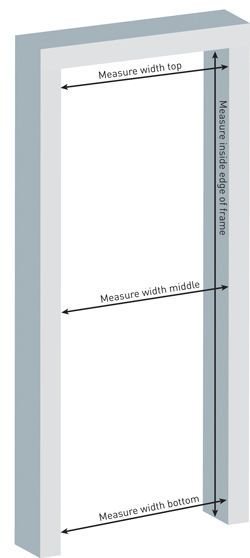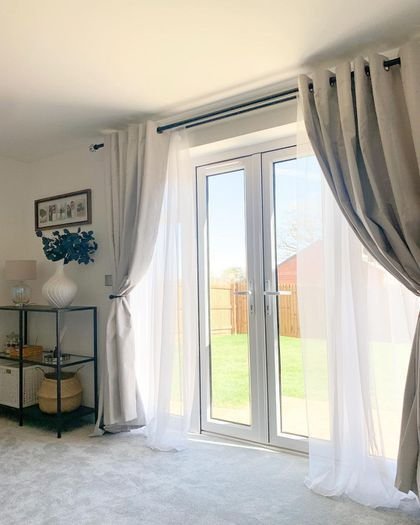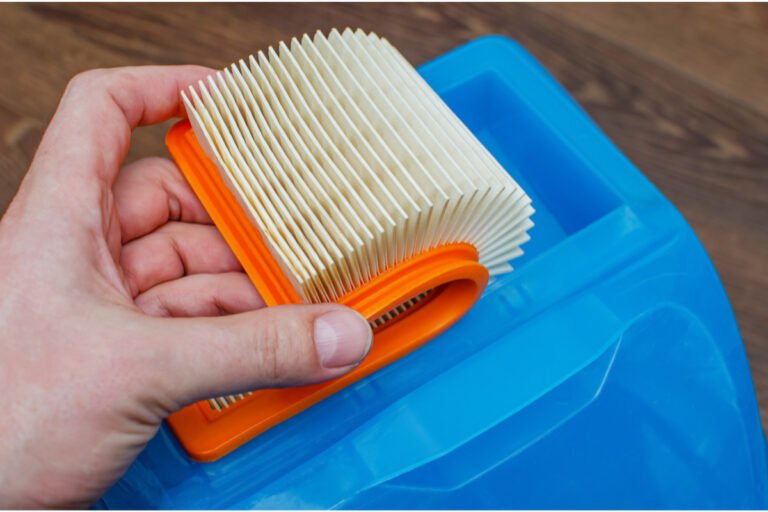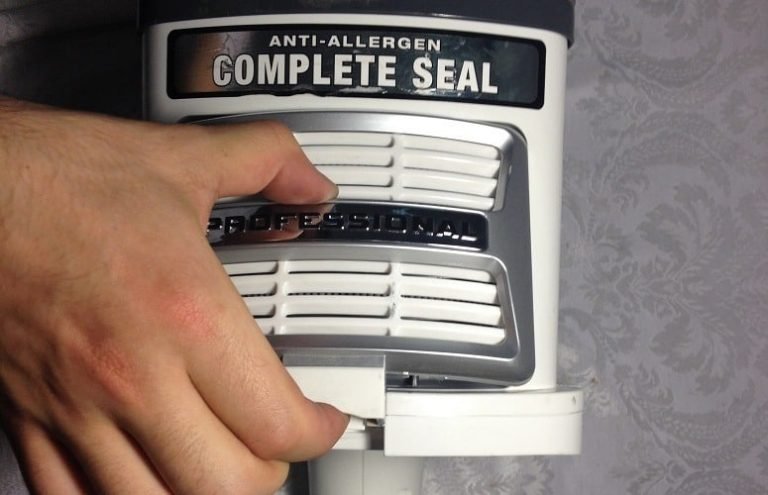Curtain Hanging 101: How To Hang A Curtain On A Door

Are you trying to spruce up your home’s interior without the help of a contractor? Have you ever thought about hanging a curtain on an existing door frame in order to do so? By simply deciding to hang curtains yourself, you can save time and money while bringing some extra style and flair into your home. Knowing how to hang a curtain on a door can be tricky, though, unless you read this blog post!
In this guide, I will walk through all the steps necessary to install a curtain onto any type of conventional doorway successfully. Armed with standard tools available at most hardware stores and a bit of patience, it’s easy to install window treatments or panels inside any doorway space confidently. Let’s get started!
Choosing the Right Curtain

Choosing a design is the first step in learning how to hang curtains on a door. There are many different types of curtains, each with unique qualities. Thermal curtains can be your best option if you’re seeking a strategy to regulate room temperature and save energy bills. These curtains are ideal for places that receive a lot of sunlight since they keep the space comfortable all year round.
However, if your bedroom is too bright, use blackout curtains. These curtains are great for providing seclusion and darkening your space, making obtaining a good night’s sleep simple
Drapes, which are long and heavy, add an element of sophistication and elegance to any room. If you’re looking for a curtain style that allows plenty of light while still offering privacy, café curtains could be the right fit. They cover only the lower half of a window or door, balancing light and privacy perfectly.
Lastly, if you want to maximize natural light in a room, sheer curtains are the way to go. These light, airy curtains add a gentle, delicate touch to any space. Now that you know the basics, you can choose the perfect curtain style for your door!
Necessary Tools and Safety Precautions
It’s important to have all the required equipment on hand before beginning this curtain-hanging journey. What you’ll need is as follows:
- Curtain Rod: This is where your curtain will eventually hang. It should be broader than your doorway to accommodate the curtain adequately.
- Brackets: These little helpers will support your curtain rod. Make sure to pick brackets sturdy enough to handle your curtain’s weight.
- Level: This tool will help ensure your curtain rod is horizontal.
- Adhesive Hooks: A great alternative to screws because they’re easy to install and remove and won’t leave any mark on your door.
- Drill: This tool will be used to drill the brackets into the door frame.
- Screws: These will secure the brackets to the door frame.
- Measuring Tape: To measure your door and curtain so that they fit perfectly.
If you’re going to be working with tools, you must always put safety first. Here are some things to remember about safety:
✅Always use safety goggles to prevent dust or other debris from getting into your eyes when drilling.
✅Wear gloves to protect your hands when handling sharp things like screws.
✅Make sure to keep a level out of the reach of young children while using one.
✅Ensure that there are no obstacles or tripping risks close by.Never leave equipment where kids may access it unaccompanied.
As soon as everything is prepared, we may install the brackets.
Measuring the Door

First, measure the door’s width from side to side. Measure with a tape and take note.
Next, gauge the door’s height from the bottom border to its top. The curtain’s length should be sufficient to touch the floor; therefore, taking an accurate measurement is crucial.
The curtain rod should ideally be placed about 4 to 6 inches above the door frame. This will give the illusion of a taller door and allow the curtain to hang better.
Mark the location on both sides of the door where you measured the height above the doorframe. Here is where you will put the hooks for the curtain rods.
Remember that the rod must reach past the door on both sides. This lets the curtains fully close without blocking the door. Increasing the door’s width by 6 to 12 inches is a good idea.
Note down these measurements so you can reference them when buying your curtain rod and brackets.
Installing the Curtain Rod

Before starting, ensure you have all the necessary tools close at hand. Here’s how to install the curtain rod brackets and ensure the rod is level:
① Positioning the Brackets
Place your brackets using the locations indicated by the markings you created above the door frame. The brackets must be strong and tightly fastened since they will support the curtain rod. Mark the left side of the door with your left bracket and the right side with your right bracket.
② Pre-drilling Holes
We recommend pre-drilling holes for the screws. This decreases the chance of harming the door frame and makes it easier to handle the screws as they are being installed. Make holes with your drill where the bracket’s screws will go.
③ Attaching the Brackets
After pre-drilling the holes, align your bracket with the holes and secure it in place using screws. Make sure the bracket is stable, and the screws are snug. For the other side, repeat this procedure.
④ Checking for Level
Before placing your curtain rod, it’s essential to ensure that the brackets are level. Place your level on top of the brackets. If the bubble in the level is centered, then your brackets are level. If not, you may need to adjust your brackets.
⑤ Placing the Curtain Rod
Once your brackets are securely installed and leveled, you can put your curtain rod. Lift the rod up and rest it in the brackets.
Remember, safety comes first! Always use caution when using power tools and climbing ladders.
Threading the Curtain onto the Rod
Slide the curtain onto the rod. If your curtain has a rod pocket, you just need to push the rod through this pocket. If it has grommets (those are the ring-like holes), guide the rod through each of these holes one by one. If it has hooks or rings, attach these to the curtain first, then slide these onto the rod. Be careful to ensure the front of the curtain is facing the direction you want.
Hanging the Curtain on the Rod

Once the curtain is on the rod, it’s time to hang it up. Here are the steps:
- Lift the Rod: Carefully lift the rod with the curtain onto the brackets. Each end of the rod should rest in the cup of each bracket.
- Secure the Rod: Most brackets have a set screw on the side. If yours do, tighten this screw to hold the rod in place. If not, make sure the rod is resting securely in the brackets.
- Arrange the Curtain: Spread out the curtain along the rod. Make sure it covers the door evenly on both sides.
After hanging the curtain, adjust it to achieve the desired look. Here’s how:
- For a Fuller Look: Bunch up the fabric in even gathers for a fuller, more luxurious look. You might want to do this for drapes or blackout curtains.
- For a Cleaner Look: Stretch out the curtain so it lies flat. This works well for sheer curtains or café curtains.
- For a Balanced Look: Arrange the curtain so it’s evenly distributed on both sides of the door. This works well for any type of curtain.
The final appearance of your curtain depends on your personal preference. Feel free to adjust until you’re happy with the look!
Maintenance and Care of Curtains
Caring for and maintaining your curtains can help extend their lifespan and ensure they always look their best. Here are some handy tips:
- Regular Dusting: Dust can accumulate quickly on curtains, so dusting them regularly is a good idea. You can use a feather duster or the upholstery attachment on your vacuum cleaner.
- Gentle Washing: Check the care label on your curtains before washing. Some curtains may be machine washable, while others may require hand washing or professional cleaning. Use mild detergent and cool water to prevent fading and shrinkage when washing.
- Proper Drying: Avoid wringing out your curtains, which can damage the fabric. Instead, gently squeeze out excess water and hang them up to air dry. Avoid direct sunlight as it can fade the colors.
- Ironing: If your curtains are wrinkled, you can iron them on a low setting. Always iron on the back side of the curtain to prevent damaging any patterns or prints.
- Rotating: To minimize sun damage, rotate your curtains every few months. This means swapping the left curtain with the right one. This can help ensure that any fading from the sun is evenly distributed.
When to Replace Your Curtains

While good maintenance can extend the life of your curtains, there will come a time when they need to be replaced. Here’s when you should consider replacing your curtains:
- Fading Colors: Over time, sunlight can cause the colors in your curtains to fade. It’s time to replace your curtains when the color becomes noticeably dull.
- Damaged Fabric: Look out for signs of damage like rips, tears, or fraying edges. These issues can be hard to repair, and it might be better to replace the curtains.
- Outdated Style: If your curtains no longer match your room’s decor or are outdated, this could be a good excuse to replace them.
- Not Functioning Properly: If your curtains no longer open and close easily, or if they need to provide more privacy or light control, it might be time to replace them.
Remember to recycle or donate your old curtains whenever possible, and enjoy the process of selecting new ones that reflect your current style and needs!
Frequently Asked Questions
Q: How do you hang a curtain on a sliding glass door?
Hanging curtains on a sliding glass door can be accomplished with a sturdy rod and brackets, ensuring a firm hold. You will need to measure the length and width of the door, then purchase a curtain panel that fits. Attach the brackets to the area above the door using drywall anchors for stability. Thread the curtain onto the rod and then set the rod onto the brackets. Adjust the curtain to ensure it covers the door evenly.
Q: Can you use a magnetic curtain rod on a French door?
Yes, a magnetic curtain rod can be an ideal solution for French doors, especially those with metal frames. The magnet in the rod attaches securely to the metal, enabling you to hang your curtain easily without needing to drill holes.
Q: What’s the best way to hang a curtain with command hooks?
Command hooks are handy for hanging lightweight curtains without damaging your walls or window frames. Simply attach the hooks where you’d like the top of your curtain to rest, making sure they’re level. Then, slide your curtain rings onto the rod and hang the rod on the hooks. Be sure to check the weight capacity of the command hooks to ensure they can support your curtain.
Q: Can a tension rod hold heavy curtains?
The answer is yes, as long as you choose the right size and material for your curtains. Tension rods come in a range of sizes and weight capacities, so be sure to select one that can support the weight of your curtains. Additionally, opting for a more durable material, such as steel, can provide extra support and prevent the rod from bending or sagging.
Q: Is it possible to use drywall anchors to hang a curtain?
Absolutely! If you’re hanging a curtain on a wall without a window frame, drywall anchors can provide the needed stability. After determining where the brackets for your curtain rod will go, drill holes and insert drywall anchors. Then, screw the brackets into the anchors. This method works well for heavier curtains or drapery.
Conclusion
Now that you know how to hang a curtain on a door, you can bring your creative potential to life and craft the perfect atmosphere in any room. To make it special, you may want to add extra touches, such as curtain tassels or hooks. You also have the benefit of blocking out extra light or adding extra warmth depending on what kind of upper windows you have and the curtain’s material.
Be sure to account for the space where the curtains will be draped so that they stay on time and avoid getting caught on something when they are being drawn and closed. Don’t let positioning protocols stop you from experimenting with different door curtain styles- stay open-minded and find what works best for your space! You have all the tools now; now it’s just a matter of power-hanging your way to victory.






